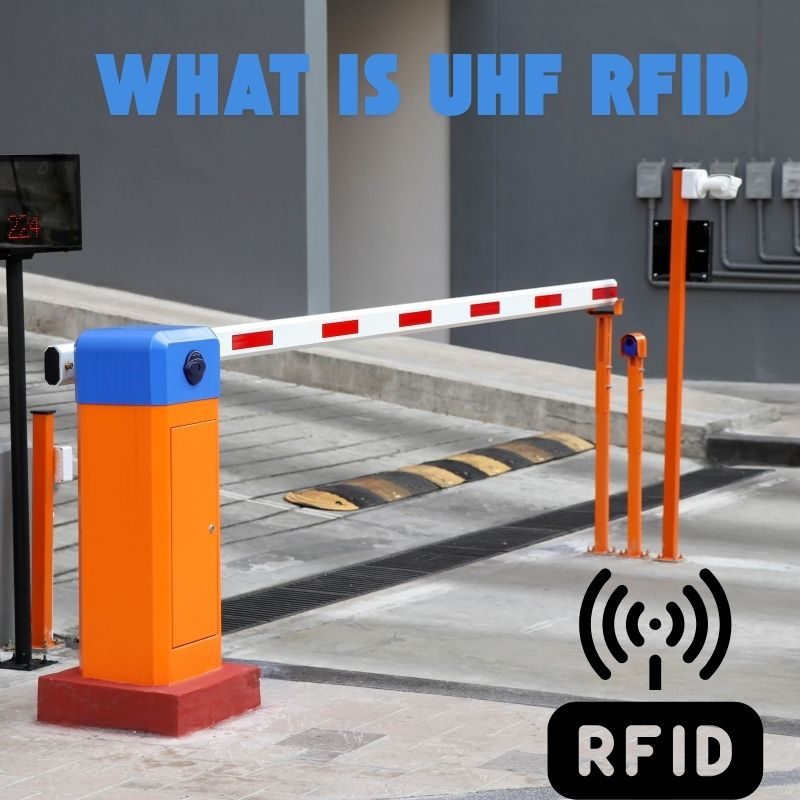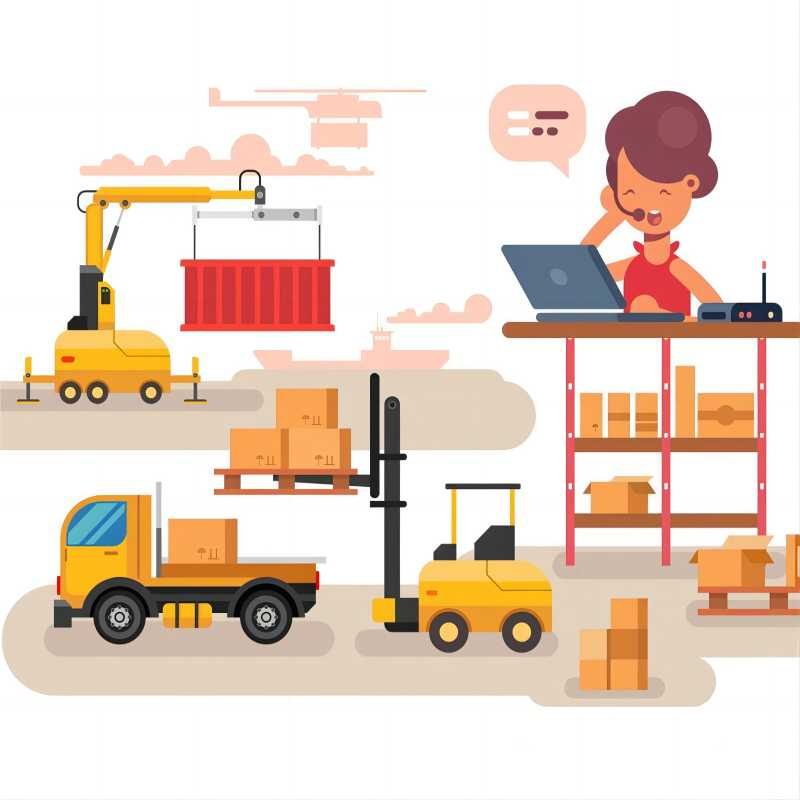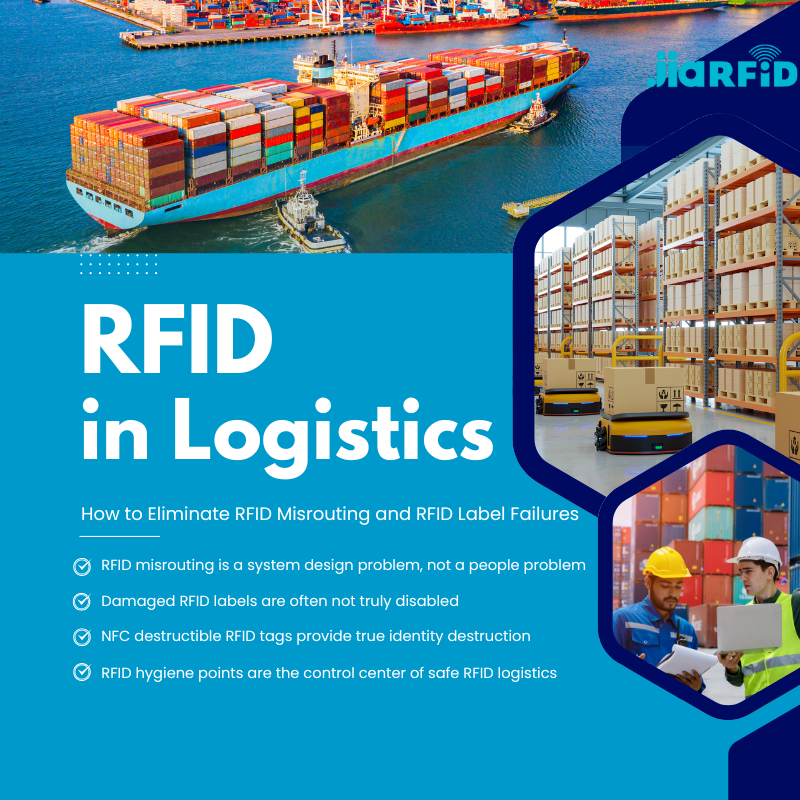
Hvad er UHF RFID?
Indholdsfortegnelse
Indledning
UHF RFID (Ultra-High Frequency Radio Frequency Identification) er en banebrydende identifikationsteknologi, der vinder frem i forskellige brancher. Fra detailhandel og logistik til sundhedspleje og landbrug ændrer dens evne til at muliggøre hurtig, kontaktløs dataudveksling den måde, virksomhederne arbejder på.
Uanset om du udforsker RFID for første gang eller ønsker at uddybe din viden, vil denne guide guide dig gennem, hvad UHF RFID er, hvordan det fungerer, dets anvendelsesmuligheder, og hvorfor det er en teknologi, man skal kende til i 2025.

Hvad er UHF RFID?
UHF RFID, en forkortelse for Ultra-High Frequency Radio Frequency Identification, er en trådløs kommunikationsteknologi, der bruger radiobølger til at identificere og spore tags, der er fastgjort til objekter. Det er en af de tre vigtigste frekvenskategorier inden for RFID-teknologi – de to andre er lavfrekvens (LF) og højfrekvens (HF).
UHF fungerer typisk inden for området 860 MHz til 960 MHz og er kendt for:
- Længere læseafstande (op til 12 meter eller mere)
- Hurtigere dataoverførsel
- Mulighed for at læse store mængder
Enkelt sagt er UHF RFID som en digital “stregkode på steroider” — der kræves ingen synsforbindelse, og hundredvis af varer kan læses øjeblikkeligt.
Hvordan virker UHF RFID?
For at forstå, hvordan UHF RFID fungerer, skal vi se på dens kernekomponenter:
- RFID tags: Indeholder en mikrochip og antenne, der gemmer data.
- RFID læsere: Udsender radiobølger og modtager data fra tags.
- Antenner: Forstærk signalet mellem tags og læsere.
- Middleware/software: Behandler og administrerer de indsamlede data.
Der er to hovedtyper af UHF RFID tags:
- Passive UHF-tags: Bruger energi fra læserens signal; billigere og almindeligt anvendt.
- Aktive UHF-tags: Batteridrevet; velegnet til langdistance- og realtidsanvendelser.
Nøglefunktioner:
- Læseren udsender et signal i UHF-båndet.
- Tagget modtager energi, tænder og sender sine data tilbage.
- Læseren indsamler disse data og sender dem til et backend-system til behandling.
Systemet kan læse flere tags samtidigt, selv ved høje hastigheder, hvilket gør UHF RFID ideel til dynamiske miljøer som transportbånd eller hurtigt bevægelige lagre.
Fordele ved UHF RFID-teknologi
Hvorfor vinder UHF RFID så meget frem? Fordi det løser virkelige udfordringer inden for sporing og automatisering. Her er de mest fremtrædende fordele:
- Lang læseafstand: Op til 12 meter, selv i barske miljøer
- Massevis af læsning: Læs hundredvis af tags på få sekunder
- Omkostningseffektivt: Passive tags er overkommelige i pris til brug i stor skala
- Synlighed i realtid: Øjeblikkelige opdateringer om lagerbeholdning og bevægelser af aktiver
- Ikke-synsfelt: Ingen behov for at scanne direkte som med stregkoder
- Skalerbarhed: Velegnet til små virksomheder eller globale forsyningskæder
Kort sagt øger det effektiviteten, nøjagtigheden og automatiseringen – vigtige grundpiller for moderne virksomheder.
Almindelige anvendelser af UHF RFID
UHF RFID er blevet en central teknologi i moderne automatiserings- og sporingssystemer og tilbyder enestående rækkevidde, hastighed og alsidighed. Dens evne til at læse hundredvis af tags samtidigt og over lange afstande gør den uvurderlig i en lang række brancher.
Detailhandel
- Lagerkontrol
- Tyverisikringssystemer
- Automatisk kasse
- Lageropdateringer i realtid
Logistik og forsyningskæde
- Forsendelsessporing
- Pallehåndtering
- Cross-docking-operationer
- Leveringsbevis
Fremstilling
- Sporing af igangværende arbejde (WIP)
- Kvalitetskontrol
- Overvågning af udstyr
Sundhedspleje
- Patientarmbånd
- Udstyrssporing
- Lægemiddelbeholdning
Landbrug
- Overvågning af husdyr
- Sporing af landbrugsudstyr
- Intelligente vandingssystemer
Biblioteker og uddannelse
- Bogsporing
- Laboratorieaktivforvaltning
- Adgangskontrol
Uanset branche tilbyder UHF RFID synlighed, effektivitet og sporbarhed i realtid.
UHF RFID vs. HF og LF RFID – Vigtige forskelle
| Feature | LF (lav frekvens) | HF (høj frekvens) | UHF (Ultra-High Frequency) |
|---|---|---|---|
| Frekvens | 125-134 kHz | 13,56 MHz | 860-960 MHz |
| Læs Range | ~10 cm | ~1 m | Op til 12 m |
| Datahastighed | Langsom | Moderat | Hurtig |
| Koste | Lav | Moderat | Varierer |
| Brug Cases | Sporing af dyr | Kontaktløse betalinger | Forsyningskæde, detailhandel, logistik |
UHF RFID tilbyder den længste læseafstand og hurtigste ydeevne, hvilket gør den ideel til hurtigt skiftende miljøer og sporing af store mængder.
UHF RFID-standarder og -regler
Standarder regulerer den globale brug af UHF RFID for at sikre kompatibilitet:
- EPCglobal Gen2 / ISO 18000-6C: Industristandard for passiv UHF RFID
- FCC (USA): Opererer i 902–928 MHz
- ETSI (Europa): Opererer i 865–868 MHz
- Andre regioner: Varierer lidt afhængigt af telekommunikationsreglerne
Det er afgørende at sikre overholdelse af regionale frekvensbestemmelser, når UHF RFID implementeres globalt.
Typer af UHF RFID-tags
Passive UHF RFID-tags
- Mest almindelige
- Omkostningseffektiv
- Anvendes i detailhandlen, logistikken osv.
Aktive UHF RFID-tags
- Batteridrevet
- Længere rækkevidde
- Anvendes til sporing af værdifulde aktiver
Semi-passive (BAP) tags
- Batteriassisteret for bedre ydeevne
Tagformfaktorer
- Indlæg
- Etiketter
- Hårde mærker
- Robuste tags til metal eller barske miljøer
Vælg tagtypen ud fra dit miljø, rækkeviddekrav og budget.
Udfordringer og begrænsninger ved UHF RFID
Som enhver anden teknologi er UHF RFID ikke perfekt. Her er nogle ting, du skal overveje:
- Interferens fra metal og væsker: Kan blokere eller forvrænge signaler
- Miljøfaktorer: Ekstreme temperaturer kan påvirke ydeevnen
- Begrænsninger i synsfeltet: Tags i tætte stakke kan muligvis ikke læses pålideligt.
- Forudgående omkostninger: Infrastrukturopsætning kan være dyrt
- Dataoverbelastning: Kræver robust software til håndtering af dataindsamling i stor skala
Men med omhyggelig planlægning kan disse begrænsninger minimeres eller helt undgås.

Fremtidige tendenser inden for UHF RFID (2025 og fremover)
UHF RFID er ikke bare kommet for at blive – den udvikler sig hurtigt. Tendenser omfatter:
- Integration med IoT: Smarte sensorer + RFID = kraftfulde dataindsigter
- Cloudbaserede RFID-systemer: Administrer tags hvor som helst
- AI og maskinlæring: Prediktiv analyse ved hjælp af RFID-data
- Smarte byer og infrastruktur: Trafikflow, affaldshåndtering og mere
- Industri 4.0: Realtidsfabriksautomation og digitale tvillinger
Med lavere omkostninger og bedre ydeevne kan man forvente en massiv udbredelse på tværs af brancher inden udgangen af dette årti.
Er UHF RFID det rigtige for dig?
UHF RFID er en kraftfuld, skalerbar teknologi, der kan hjælpe din virksomhed med at reducere manuelle processer, mindske tab og forbedre synligheden. Uanset om du administrerer et lager eller sporer medicinsk udstyr af høj værdi, er fordelene ved langtrækkende, hurtig datafangst banebrydende.
Men som med al teknologi ligger nøglen til succes i at forstå dens styrker og anvende den korrekt.
Er du klar til at udforske UHF RFID til din virksomhed? Start med at konsultere en pålidelig leverandør af RFID-løsninger eller gennemføre et pilotprogram for at vurdere dine behov.
Ofte stillede spørgsmål om UHF RFID-teknologi
Hvad står UHF RFID for?
UHF RFID står for Ultra-High Frequency Radio Frequency Identification (ultrahøjfrekvent radiofrekvensidentifikation). Det henviser til RFID-systemer, der opererer i frekvensområdet 860–960 MHz og er i stand til at læse tags fra flere meters afstand.
Hvordan fungerer UHF RFID?
UHF RFID-systemer bruger radiobølger til at kommunikere mellem en læser og en tag. Læseren sender et signal, der aktiverer passive tags, som derefter sender deres data tilbage til læseren. Dette muliggør hurtig, trådløs identifikation af objekter uden behov for direkte synsfelt.
Hvad er rækkevidden for et UHF RFID-system?
UHF RFID-systemer har typisk en læseafstand på 3 til 12 meter (10 til 40 fod) for passive tags. Aktive tags med batterier kan udvide rækkevidden betydeligt, nogle gange op til 100 meter eller mere.

Ray Zhou
Denne artikel er skrevet af Ray Zhou, en ekspert i RFID-teknologi med mere end 10 års brancheerfaring.
Kommentarer
Hotte produkter

RFID i logistik: Sådan undgår du fejl i RFID-ruteplanlægning og fejl i RFID-mærker
RFID i logistikken er mere end blot et værktøj til at fremskynde processer. Det er blevet en central del af, hvordan moderne forsyningskæder fungerer.

Hvad er RFID-affaldshåndtering?
Forestil dig en by, hvor alle skraldespande taler – ikke bogstaveligt talt – men via en lille chip, der fortæller systemet, når de er fulde, når de er tømt, og hvor de er blevet kørt hen. Det er netop det, RFID-affaldshåndtering gør i dag.

Hvad er boltetætninger og deres anvendelser? | Komplet guide
Inden for global handel og logistik spiller boltforseglinger en afgørende rolle for fragtsikkerhed og compliance. Disse små, men kraftfulde enheder er designet til at låse skibscontainere, trailere og fragtdøre med en mekanisme, der sikrer mod manipulation.

Hvad er en RFID-kortbeskytter? Fordele, brugsscenarier og købsvejledning
RFID-teknologi (Radio Frequency Identification) er overalt: i dine kreditkort, ID-badges, transportkort, hotelværelsesnøgler og meget mere. Det giver hastighed og bekvemmelighed, men det åbner også døren for en ny form for digitalt tyveri kaldet "skimming". Det er her, en RFID-kortbeskytter kommer ind i billedet.

RFID-armbånd til events: Guide til storkøb for arrangører
RFID-armbånd til events er ved at blive løsningen for arrangører, der har brug for hurtigere adgang, forebyggelse af svindel og kontantløse betalinger ved koncerter, festivaler og sportsarenaer. I modsætning til papirbilletter eller QR-koder bruger disse smarte armbånd indbyggede chips til at strømline adgangen, sikre transaktioner og forbedre gæsteoplevelsen.

Hvordan RFID-tag på forruden forbedrer adgangskontrol til køretøjer og bompengesystemer
I dagens tempofyldte verden skal identifikation af køretøjer være hurtig, sikker og kontaktløs. Et RFID-tag på forruden giver præcis det - en pålidelig måde at styre opkrævning af bompenge, parkering og adgang til gates på uden at standse køretøjerne.
Tags
RELATEREDE BLOGS

RFID i logistik: Sådan undgår du fejl i RFID-ruteplanlægning og fejl i RFID-mærker
RFID i logistikken er mere end blot et værktøj til at fremskynde processer. Det er blevet en central del af, hvordan moderne forsyningskæder fungerer.

Hvad er RFID-affaldshåndtering?
Forestil dig en by, hvor alle skraldespande taler – ikke bogstaveligt talt – men via en lille chip, der fortæller systemet, når de er fulde, når de er tømt, og hvor de er blevet kørt hen. Det er netop det, RFID-affaldshåndtering gør i dag.

Hvad er boltetætninger og deres anvendelser? | Komplet guide
Inden for global handel og logistik spiller boltforseglinger en afgørende rolle for fragtsikkerhed og compliance. Disse små, men kraftfulde enheder er designet til at låse skibscontainere, trailere og fragtdøre med en mekanisme, der sikrer mod manipulation.




